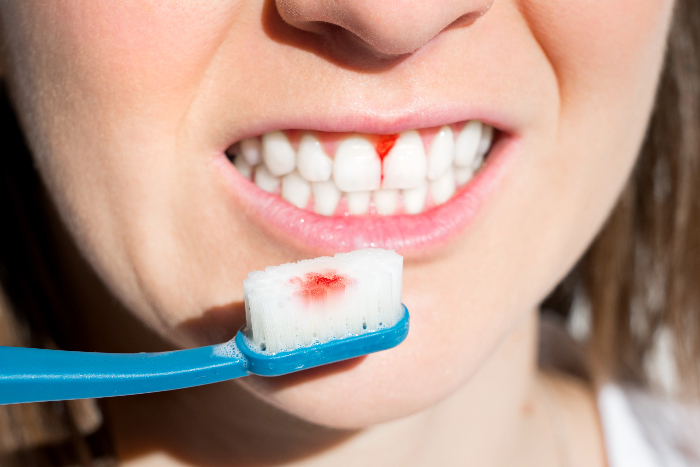
Bleeding gums can be a concerning oral health issue that affects people of all ages, including children. While it’s normal for gums to bleed occasionally, excessive or frequent bleeding can be a sign of an underlying problem that needs to be addressed. In children, bleeding gums can be especially concerning, as they can be a sign of a more serious issue that may require prompt treatment. In this blog post, we’ll explore the reasons for bleeding gums in children and what parents can do to address the issue.
1. Poor Oral Hygiene:
One of the most common reasons for bleeding gums in children is poor oral hygiene. When children don’t brush and floss regularly, plaque and tartar can build up on their teeth and gums, leading to inflammation and bleeding. To prevent this, parents should encourage their children to brush their teeth at least twice a day for two minutes each time, and floss once a day to remove any food particles and plaque.
2. Gingivitis:
Gingivitis is a common gum disease characterized by swollen, tender, and bleeding gums. It occurs when the plaque and tartar buildup along the gumline is not removed promptly. The bacteria present in plaque release toxins that irritate the gums, leading to inflammation and bleeding. Gingivitis can be treated with a thorough cleaning and good oral hygiene practices, but if left untreated, it can lead to more serious gum diseases like periodontitis.
3. Hormonal Changes:
During puberty, hormonal changes can impact gum health. Increased levels of hormones, such as estrogen and progesterone, can make gums more sensitive and prone to bleeding. This can cause gums to bleed more easily, especially during brushing and flossing. It is crucial for parents to educate their children about the importance of maintaining excellent oral hygiene during this stage of life.
4. Nutritional Deficiencies:
Children who lack essential vitamins and minerals in their diet are more likely to experience bleeding gums. Vitamin C deficiency, in particular, can weaken gum tissues, leading to gum bleeding and other oral health problems. Parents should ensure that their children are eating a balanced diet that includes plenty of fruits, vegetables, and whole grains.
5. Aggressive Brushing:
While proper brushing is essential, brushing too hard or using a toothbrush with hard bristles can damage the gums and cause bleeding. Teach your child the correct brushing technique, emphasizing the importance of gentle, circular motions. Switching to a soft-bristled toothbrush can also help protect the gums.
6. Dental Trauma:
Children are often active and prone to accidents that may result in dental trauma. Injuries such as falls, collisions, or sports-related accidents can cause gum bleeding. If your child experiences dental trauma, seek immediate dental care to assess whether any significant damage has occurred.
7. Tooth Decay and Cavities:
Untreated tooth decay and cavities can contribute to bleeding gums. When cavities progress deeper into the tooth, they can reach the pulp and cause infection. This infection can spread to the gums, resulting in bleeding. Regular dental check-ups and preventive care are crucial to detect and treat tooth decay at an early stage.
8. Medications:
Certain medications can cause bleeding gums in children. These include blood thinners, aspirin, and other nonsteroidal anti-inflammatory drugs (NSAIDs). These medications can thin the blood and cause bleeding gums, so it’s important for parents to inform their child’s dentist of any medications they’re taking.
Conclusion:
If your child has bleeding gums, it is not something that you should ignore, as bleeding gums can indicate underlying oral health issues. Encouraging good oral hygiene habits, including regular brushing and flossing, along with routine dental visits, is essential for maintaining healthy gums. By addressing the causes of bleeding gums early on, parents can ensure their children enjoy optimal oral health.
